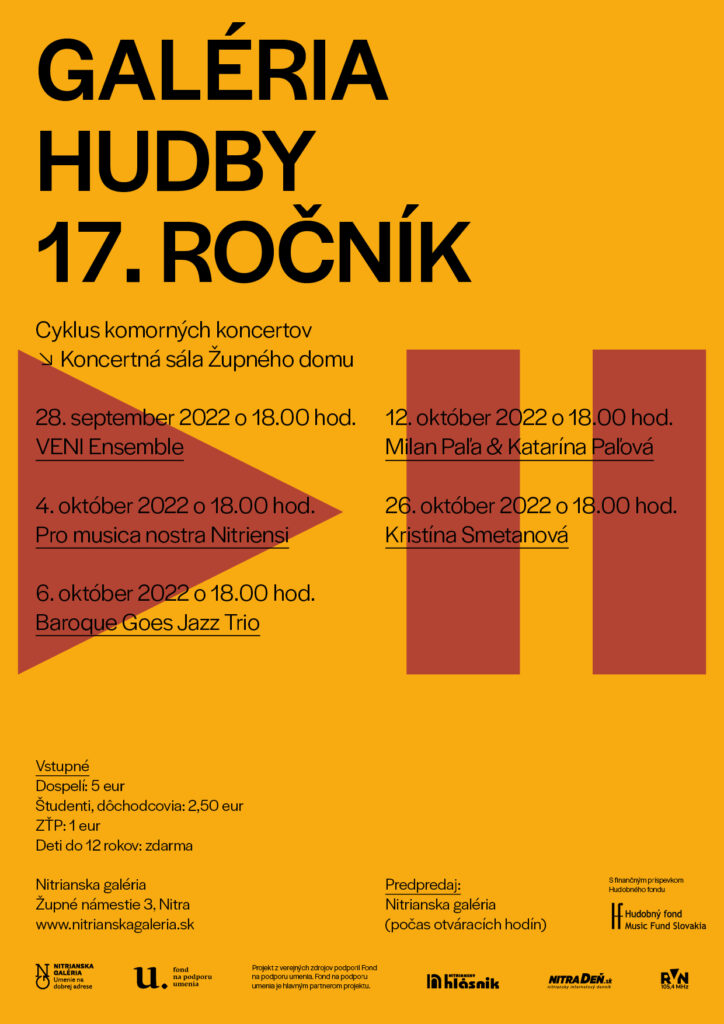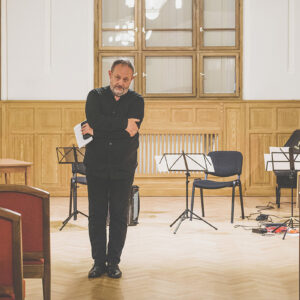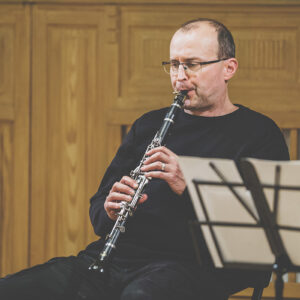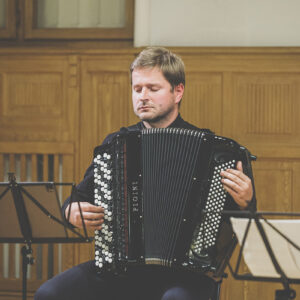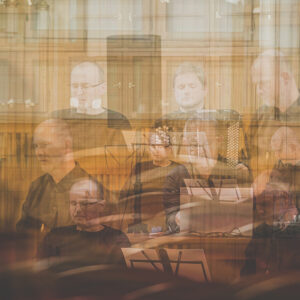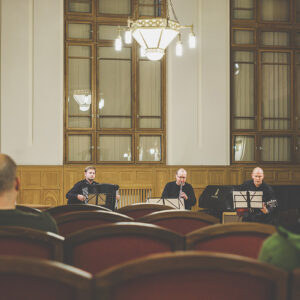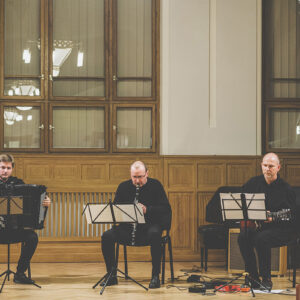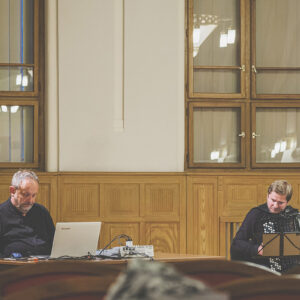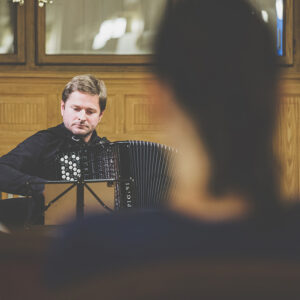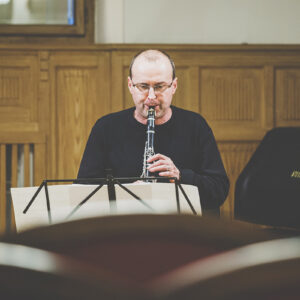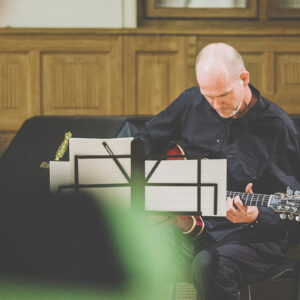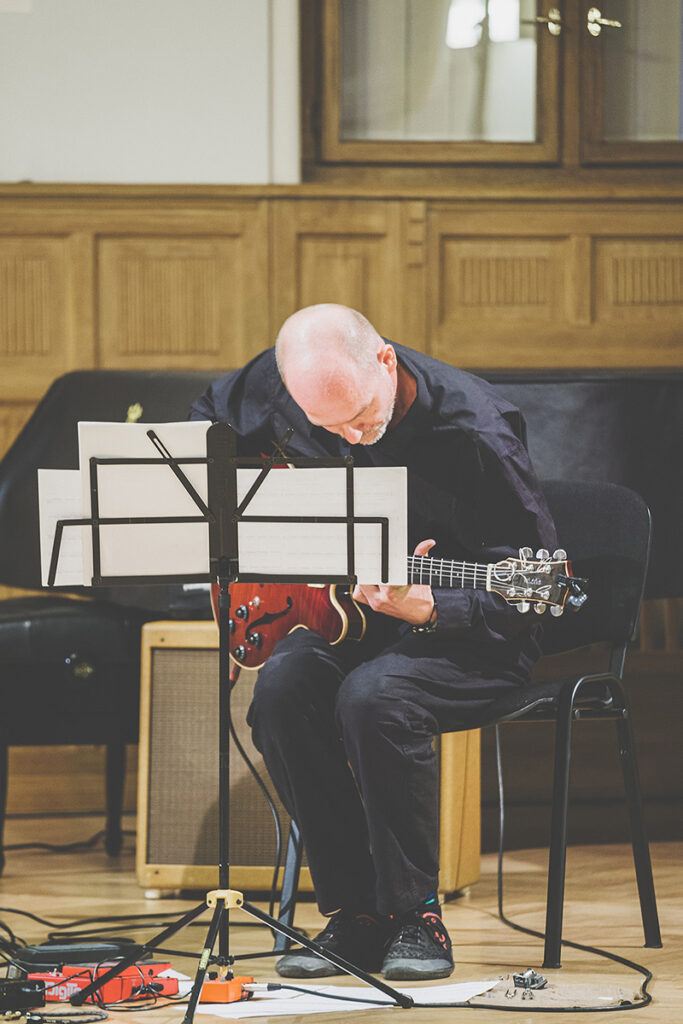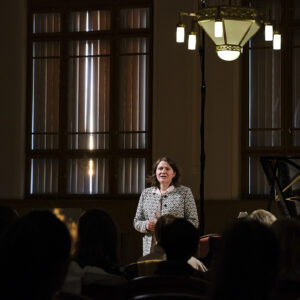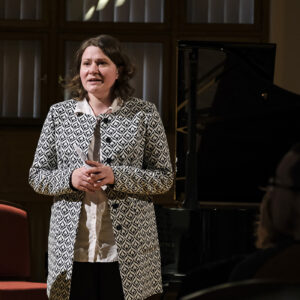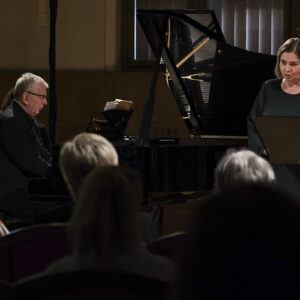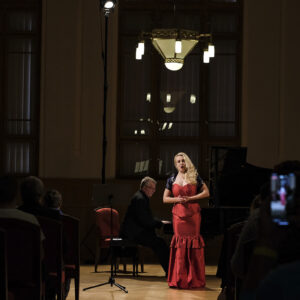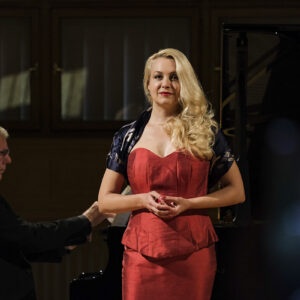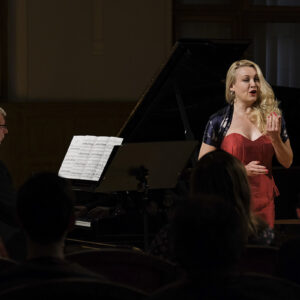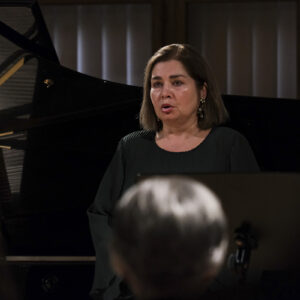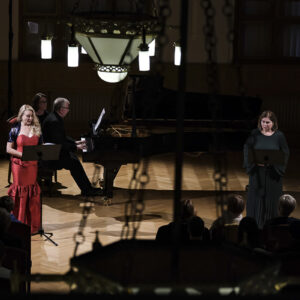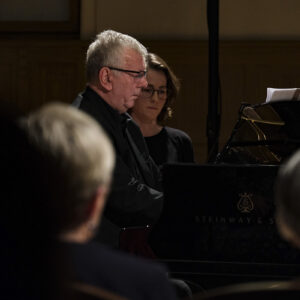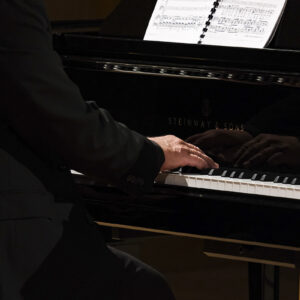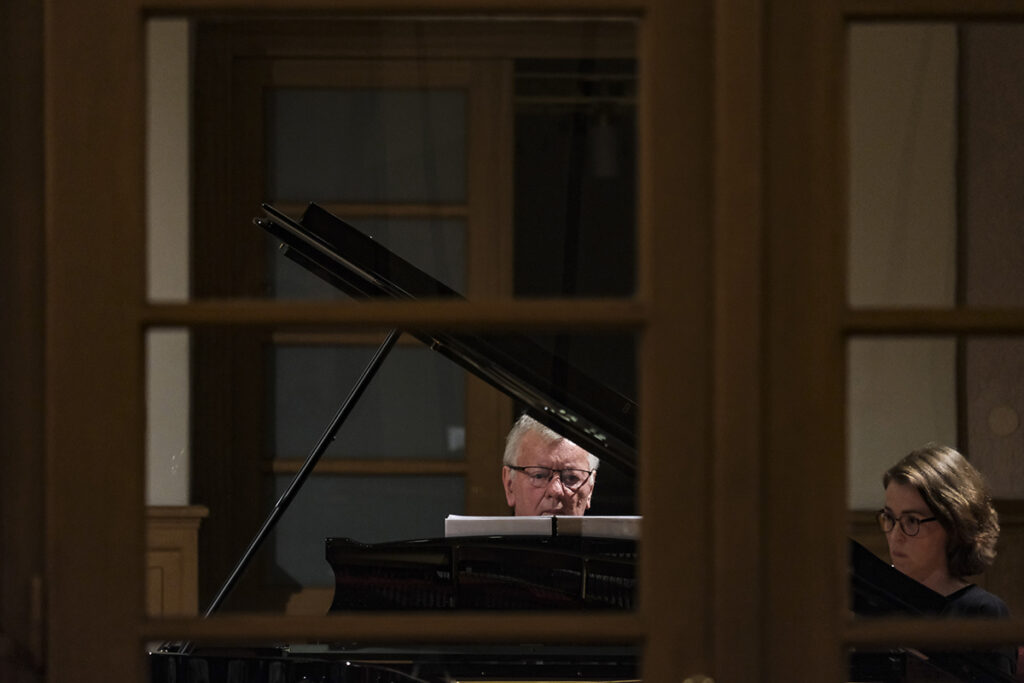Information
Admission
Adults: 5 EUR
Students, seniors: 2,5 EUR
Disabled: 1 eur
Children under 12: Free
Pre-sale
Nitra Gallery (during opening hours)
Na stiahnutie
Support
With financial support of the Slovak Arts Council public funds. The Council is the leading partner of the project.
With financial support of the Music Fund Slovakia.
September 28, 2022, 6pm
VENI Ensemble
Ronald Šebesta (clarinet)
Michal Matejka (electric guitar)
Milan Osadský (accordion)
Daniel Matej (art director, laptop, the Elektrosluch)
Daniel Matej
CAVE SONGS [re-mixed] (2005)
Gospel
Daniel Matej
E [for e. g.] (2009/2010)
for electric guitar
Daniel Matej
CAVE SONGS [re-mixed]
Blues
Salvatore Sciarrino
Let Me Die Before I Wake (1982)
per clarinetto in Sib
Daniel Matej
CAVE SONGS [re-mixed]
De profundis
Nirmali Fenn
The Edge of Self (2013)
for accordion solo
Daniel Matej
CAVE SONGS [re-mixed]
Sex
Pedro Rebelo
Trio (2011)
for any three instruments
Daniel Matej
CAVE SONGS [re-mixed]
Ho-chi-min
Daniel Matej
CODA [to Ho-chi-min] no. 3 (2020)
for three instruments and electronics
October 4, 2022, 6pm
Pro musica nostra Nitriensi
Mária Tajtáková (soprano)
Eva Garajová (alto)
Marián Lapšanský (piano)
Antonín Dvořák (1841-1904)
Gypsy Melodies Op. 55 selection
I. Má píseň zas
II. A les tichý je
III. Když mne stará matka
Love Songs Op. 83 selection
I. Ó, naší lásce nekvete
II. V tak Mnohém srdci mrtvo jest
III. Kol domu se teď potácím
Moravian Duets Op. 32
I. A já ti uplynu
II. Vyleť, vtáčku
III. Kdyby byla kosa nabrúšená
IV. V dobrým sme se sešli
V. Slavíkovský polečko malý
VI. Holub na javorě
VII. Voda a pláč
VIII. Skromná
IX. Prsten
X. Zelenaj se, zelenaj
XI. Zajatá
XII. Nevěsta
XIII. Šípek
October 6, 2022, 6pm
Baroque Goes Jazz Trio
Lenka Molčányiová (duct flutes)
Ján Kružliak ml. (violin, viola)
Miloš Biháry (piano)
Claude Bolling – Suite for Flute and Jazz Piano Trio: Baroque and Blue (arr. Lenka Molčányiová)
Lenka Molčányiová – Night Tune
Anonym – Paul’s Steeple (arr. Lenka Molčányiová)
Georg Philipp Telemann – Trio Sonata a mol
Henry Purcell – Chaconne (arr. Lenka Molčányiová)
Jerome Kern – All The Things You Are (arr. Lenka Molčányiová)
Lenka Molčányiová – Baroque Jazz Suite
Oscar Peterson – The Bach Suite: Allegro (arr. Lenka Molčányiová)
With financial support of the Social and Cultural Fund of SOZA.
October 12, 2022, 6pm
Paľa a Paľová
Milan Paľa (violin, viola)
Katarína Paľová (piano)
Dumka for violin and piano
Sonáta for violin and piano
I. Con moto
II. Balada
III. Allegretto
IV. Adagio
Supplementum for violin and piano
Fairytale for violin and piano
I. Con moto. Andante
II. Con moto. Adagio
III. Allegro
Presto for violin and piano
October 26, 2022, 6pm
Kristína Smetanová
Kristína Smetanová (piano)
George Auric
Sonatine
I. Allegro
II. Andante
III. Finale. Presto
Francis Poulenc
Nocturnes
Louis Durey
Deux Etudes op. 29
Maurice Ravel
Le Tombeau de Couperin
I. Prelude
II. Fugue
III. Forlane
IV. Rigaudon
V. Menuet
VI. Toccata
September 28, 2022, 6pm
VENI Ensemble
Ever since the VENI Ensemble was founded (1987), it has served as a kind of a platform which allows for a symbiotic coexistence of “radical” composers and “enlightened” performers who collaborate on interesting musical concepts and projects (in the 35 years of its existence, more than 250 domestic and foreign performers have joined its ranks). This is in contrast with other “classic” ensembles with “strict hierarchy” and “work division” between those who “just compose” and those who “just perform”. In this manner, the ensemble’s program is also very diverse with different forms and focus points, whether it concerns the size or character of a given line-up or the music they deliver to the (ideally) curious and open-minded listener. What they all share is their desire to experiment and – as delivered by one of the key members, motivators and founders of the ensemble, John Cage – “do things that haven’t been done before”…
This year, the VENI Ensemble again presents (size-wise) two types of concerts: “small” and “big” ones. It allows for great flexibility in performing music across various (often unconventional) concert spaces.
About the Programme
It will visit Nitra with one of its “small” programs in a group of four. The concert will feature three solo instrumental scores, one trio and one quartet performances whose creation is dependent on the given moment, meaning it is always recreated as new by “composing in real time” as a response to the “theme” that is played prior to it in an electronic form.
Even though these four scores that have a specific composer with a specific poetry and specific date of creation seemingly represent different worlds and artistic concepts (two of them – Matej and Rebelo – are captured in an unconventional notation as “open works” so their interpretation will always feature different variations, while the two other ones –
Fenn and Sciarrino – represent “traditional scores” with a clear division of roles between the one who created it and the one who is supposed to perform it), the way they are incorporated into the concert makes them a part of a suite with balanced proportions and elements of contrast, similarity and continuity… An important component they all share are five short electronic “ritornellos”, originally from Matej’s “cave songs”, that are intertwined into four instrumental parts as well as the closing “code”.
This type of program is based on an idea the ensemble has been advocating in many of its programs since 2003: to perceive a concert not as a “showcase” of various compositional acts and interpretational performances that audience “praises” with bigger or smaller applause, but as a deep dive into the undisturbed flow of MUSIC that resonates with the traditional oriental perception of art as a means of (again, in John Cage’s words) “calming our mind and heart and adapting them to perceive divine influences”.
October 4, 2022, 6pm
Pro musica nostra Nitriensi
Mária Tajtáková graduated from the Bratislava Conservatory in singing and from the Academy of Arts in Banská Bystrica in vocal interpretation. Later, she continued with doctoral studies, focusing on French lyrical opera. She cooperated with the State Theatre in Košice, Teatro della Luna in Milan, Teatro San Babila in Milan, Teatro Araldo in Turin, Teatro Barocco in Altenburg, Laxenburg and Baden bei Wien, and others. Her work with chamber music focuses on interpreting songs from late 19th century until today (Dvořák, Fauré, Duparc, Debussy, Strauss, Berg, Schönberg, Poulenc, Milhaud, Messiaen). She specially focuses on presenting the vocal production of Slovak composers (Bella, Schneider-Trnavský, Moyzes, Suchoň, Jurovský, Holoubek, Kardoš, Zimmer, Zeljenka, Hrušovský, Martinček and others).
Eva Garajová graduated from the Bratislava Conservatory in singing and then continued her studies at the Academy of Performing Arts in Bratislava. Then she went on to perfect her skills in Osimo, Stuttgart and Buffalo. During her residencies abroad, she performed in Italy, Germany, Spain, Canada and the US as Lucretia in Benjamin Britten’s opera The Rape of Lucretia. She became a member of the Bratislava Chamber Opera during her studies at AFAD and in 1995 she debuted as Olga in the opera Eugen Onegin in Banská Bystrica. In the same year, she started her collaboration with the State Opera in Prague. In 2000, she received the prestigious Award of the Masaryk Academy of Arts and the Gustav Mahler Prize of the European Union of Arts. She regularly performs with high-profile symphonic and chamber orchestras, mostly the Slovak Philharmonic and the State Chamber Orchestra of Žilina. Since 2002, she has been working with the pianist Marián Lapšanský.
Marián Lapšanský started making a name for himself as a student of the Bratislava Conservatory and then the Academy of Performing Arts in Prague where he became the absolute winner of the Smetana Piano Competition in Hradec Králové and won a prize for the best interpretation of W. A. Mozart’s works (1971) and later also the Anda-Bührle Special Prize at Géza Anda’s masterclasses in Zurich. He continued his education journey as a postgraduate student at the Moscow State Tchaikovsky Conservatory. Today, Marian Lapšanský is a regular guest performer at many prestigious concert platforms around the world, performing with renown orchestras such as the Czech Philharmonic, the Prague Symphony Orchestra FOK, the Prague Chamber Orchestra, the Slovak Philharmonic, Orchestre de la Radio Suisse Romande, Dresdner Staatskapelle, Tokyo Metropolitan Symphony Orchestra and many others. He has collaborated with such conductors as Jiří Bělohlávek, Roberto Benzi, Oliver Dohnányi, Ken Ichiro Kobayashi, Zdeněk Košler, Libor Pešek, Alexander Rahbari, Ľudovít Rajter, Emmanuel Villaume and others. M. Lapšanský’s performance art is captured on various radio, TV and studio recordings. In recent years, he has performed in Japan, Spain, Poland, Canada, Turkey, Greece, Egypt, the Republic of South Africa, Hungary or Kuwait. Marian Lapšanský plays a peculiar role of an organiser of Slovak musical life, among other activities, he is the director of the International Music Festival Musica Nobilis and president of the Johann Nepomuk Hummel International Piano Competition held in Bratislava. Up until recently, he had been the general director of the Slovak Philharmonic. Among his other professional activities is also teaching at music-focused universities in Bratislava and Prague and he also works as a lecturer at foreign universities (Japan, the US and others).
About the Programme
Gypsy melodies belong, without a doubt, to any composer’s peak achievements. In them, Dvořák was able to achieve a much more persuasive union of the vocal component and piano accompaniment than in any of his previous song series and he also successfully managed the declamatory side of setting text to music. The poems are selected and arranged by contrast, they feature a wide range of moods and create a balanced concert series. Every song is made to be the best representation of the original text. When it comes to melody and harmony, Dvořák is not trying to imitate any specific gypsy folklore, the songs’ style rather follows general folk traditions of the original text. However, the piano component contains elements of instrumental accompaniments of Slovak folk songs, specifically the characteristic way of playing the cimbalom which was later also adopted by Leoš Janáček.
The preserved manuscript of the Cypresses series contains eighteen songs. Dvořák took eight scores from the series, thoroughly rewrote them and then turned them into Love Songs Op. 83. All of the songs of the newly created series feature their original musical content and melody structures. The composer selected some parts of the scores which he originally put heavy emphasis on and reduced some of the sharp sounds and replaced them with more pleasant harmonic sounds. He also simplifies and softens the piano accompaniment to further match the musical part to the text one. Mostly because the song lyrics are a part of a romantic poetry collection by Gustav Pfleger Moravský. The overall character of Dvořák’s Love Songs is more harmonic, melodic and song-focused than the original Cypresses series. It seems like the composer is coming to terms with his disappointment in love and his music is a lot less dramatic.
The trio of Dvořák’s song series will be completed with Moravian Duets Op. 32. The composer started working on them after being nudged to by the Prague wholesaler and benefactor Ján Neff in whose family he taught piano. Neff and his wife were big music enthusiasts and they would sometimes hold small private concerts at their home where they performed duets. Here, Dvořák would fill the role of the accompanying pianist. One day, Neff suggested the composer rewrote some of the Moravian folk songs for two voices and piano, mostly those from the famous František Sušil collection titled “Moravian National Songs With Notes Embedded Into Texts”. At first, Dvořák agreed, but then he decided that instead of adjusting preexisting notes, he would incorporate the original texts alone and create completely new music for them. It gave birth to the first series of Moravian Duets, one of Dvořák’s most original musical pieces. It features all elements of the composer’s musical language: a unique approach to rhythm and melodic intervals, thorough imitation technique, multi-melodiousness and also precise art of contrast.
October 6, 2022, 6pm
Baroque Goes Jazz Trio
Baroque Goes Jazz Trio is an original project of the flautist Lenka Molčányiová whose movements between old music and jazz are worth of a virtuoso. She started mixing the duct flute with jazz saxophone when she studied these instruments abroad as she realised they both share the art of improvisation. Her first performance as a part of a trio of multi-genre musicians – the violinist Ján Kružliak ml. [Jr] and pianist Miloš Biháry – was in 2020 at a concert which was a part of the Viva Musica! festival. They performed their own musical arrangements of Baroque and jazz pieces by Johann Sebastian Bach, Henry Purcell, G.Ph. Telemann, Claude Bolling or Oscar Peterson. The trio’s repertoire also includes original versions of the scores which gain new characteristic features when performed with these instruments as well as Lenka Molčányiová’s original compositions inspired by both genres. The main goal of the project is to refresh the interpretation of old music and jazz and emphasise the playfulness of improvisation and communication between performing musicians.
October 12, 2022, 6pm
Paľa a Paľová
Milan Paľa is one of the most distinctive artists on today’s music scene. His performing style is unique and critics describe him as one of the most peculiar talents of the young generation.
He managed to receive a number of European awards and lots of international attention while still studying at Ján Levoslav Bella Conservatory in Banská Bystrica, then at Hochschule für Musik und darstellende Kunst in Vienna and the Janáček Academy of Performing Arts in Brno. His cooperation with composers has had a profound influence on the development of his own musical language. That has resulted into a number of scores “tailor made” for the young violinist. Milan Paľa is also a master viola player and he is currently the most demanded performer for introducing new pieces for both instruments. He has introduced new musical pieces on various prestigious stages (ISCM World New Music Days, 28. Muzički Bienale Zagreb, Arcus Temporum, Melos-Étos).
“Enfant terrible of solo violin” is how Milan Paľa was once described in an interview. He is also an author of multiple unique CD projects (Violin solo 1 – 5, Slovak Violin Concertos, Cantūs Moraviae). Together with the pianist Ladislav Fanzowitz, they record complete sonatas for violin and piano from various world-class artist (Brahms, Beethoven, Suchoň, Grieg, Šostakovič, Bartók).
There is a special place in Paľa’s portfolio reserved for a unique new instrument – the five-stringed violin called “Milanolo” (with a rich low viola register) which he has already used to record two different projects, Milanolo (2016) and 4 Milanolo Concertos (2018).
Katarína Paľová studied piano and conducting at the Žilina Conservatory. Between 2013 – 2018 she studied piano at the Janáček Academy of Performing Arts in Brno. She is currently working on her doctoral degree the Academy of Performing Arts in Bratislava. During her studies, she has attended masterclasses taught by Eugen Indjic, Alexander Serdar, Daan Vandewalle, Jonathan Powell and others. She was a member of a student ensemble for contemporary music called Veni Academy (M. Lejava) that she performed with at festivals like ISCM World New Music Days 2013, Melos Étos. Her CD ensemble Rolling Tones/In zarter Bewegung won the Radio_Head Awards for Classical Music (2013).
Paľová focuses mostly on music of the 20th and 21st centuries with focus on the works of less frequently played or forgotten artists (Samuil Feinberg, Nikolaj Roslavets, Giacinto Scelsi, Jean Guillou, Alfred Patera, Valentin Bibik, Toru Takemitsu, Pascal Manolios). She has premiered several scores by Slovak artists (Iršai, Manolios) as well as performed Slovak and Czech premieres of foreign artists’ pieces. As a solo and chamber player, she has performed on various stages and festivals in Slovakia and the Czech Republic (Konvergencie, Moravský podzim, Albrechtina, Levočské babie leto, Stanica Žilina-Záriečie, Ensemble Opera Diversa concert series and others).
She has recently recorded several albums in cooperation with her husband Milan Paľo that focus on violin and piano pieces by Samuil Fejnberg, Leoš Janáček, Valentin Bibik, Alfred Schnittke and Pascal Dusapin, published by Pavlík Records.
About the Programme
The concert performed by M. Paľa and K. Paľová will present some of the chamber pieces of the giant of Czech music of the 19th and 20th centuries and violin and piano pieces of the Moravian composer Leoš Janáček. Janáček is considered the founder of the Moravian composing school. He was a composer, theorist, educator and collector of folk songs. His countryside research and folk music were Janáček’s key sources of inspiration for his compositions. Janáček was only thirteen years younger than Dvořák. We could assume he would lean more towards the trends of romanticism, but it was the other way around. His language was closer to younger composers like Bartók, Szymanowski or Kodály.
His Romance was created during Janáček’s studies at Lipsko Conservatory (1879). It is the only one that has been preserved from a seven-part collection. Janáček wrote it under the influence of his young love to Zdenka Schulzová. He wrote Dumka a year later (1880), featuring various Slavic musical elements.
“I wrote the Sonata for Violin in the beginning of the war of 1914 when we were waiting for Russians in Morava.” It is the only preserved Sonata for Violin and Piano from his portfolio. The piece is written in the artist’s undeniably recognisable language with rhythmic elements he called “sčasovka” (short and often oscinato-style musical motives) and melodies referencing “spoken notes” (natural intonation of human speech). After undergoing many fundamental changes, the Sonata was published in 1922. It premiered on April 24, 1922 at a concert of the Young Moravian Music in Brno where it was performed by the violinist František Kudláček and pianist Jaroslav Kvapil. It is interesting to note that the first international performer was Paul Hindemith in 1923 in Frankfurt.
His Fairytale for Cello and Piano (1910, rev. 1923) was inspired by the Tale of Tsar Berendei, an epic poem by Vasily Zhukovsky. Janáček’s works are often inspired by Russian literature, but also music, so the colourfulness and acoustic magic of his score are able to match those of Rimskij-Korsakov or early Stravinsky.
October 26, 2022, 6pm
Kristína Smetanová
Kristína Smetanová studied piano at the Stupava Art School and at the Art School Hálková in Bratislava. She started showing interest in composing as a child and her early attempts at writing her own scores were overseen by important Slovak music composers, such as Víťazoslav Kubička and Ilja Zeljenka. Between 2008–2014, she studied piano and composition at the Bratislava Conservatory. Her graduate work in composition was titled the Symphony of Enchanted Creatures. In 2019, she started attending the Academy of Performing Arts with focus on piano works of Les Six. She has been awarded several times during her studies, e.g. first place at the Citta di Barletta international competition in Italy, the Grand Prix award (absolute winner) at an international competition in Vienna, the 21st Century Art or first place at the Yamaha Scholarship Award. As a soloist, she has performed with the Capella Istropolitana orchestra, the State Philharmonic Košice or the orchestra of the Academy of Performing Arts. She performed her solo recital during the VIVA Musica and Piano Days festivals and she also performed at the Konvergencie 2022 festival. Her chamber music activities focus mostly on her piano duets with Júlia Stahl Novosedlíková called Devanas Duo. In 2021, they published their first CD featuring their current works for piano four hands. Besides her work with classical music, she also performs as a singer and keyboard player in the Chick2Chick trio band for which she has also written several songs. She has performed with musicians like Richard Müller, Katarzia, Tolstoys, Genius Locci and lately also the Quatro Emocione band where she plays the vocaloid.
About the Programme
Art was the main artery of the French capital around which pulsed the social and cultural life of Paris. Gathering groups of intellectuals and artists started gradually forming new art movements (cubism, surrealism, impressionism) which still have a heavy influence on today’s art as well. Six young artists that included Georges Auric, Louis Durey, Arthur Honegger, Darius Milhaud, Francis Poulenc and Germaine Tailleferre, who were heavily influenced by Jean Cocteau, wanted to bring something fresh to music. The critic Henri Collet called the group Les Six while we in Slovakia call them the Paris Six – a group of composers who did not want to follow in the footsteps of Wagnerianism or atonality and dodecaphony of the Second Viennese School (Schoenberg, Berg, Webern). They wanted to create French music, full of its classical delicateness with elements of jazz, folklore, cafe and circus moods, the kind of music the real Paris lived on. Today’s concert presents a selection of their chamber piano works that contain a lot of nuances.
George Auric wrote operas, ballets, but also film music and he even served as the director of Paris Opera for several years. The Sonatina is an example of a combination of classic structures with new contemporary elements – as we can hear in the slow, cafe-style second part of the Sonatina. Francis Poulenc’s Nocturnes do not appear on concert stages very often. The eight nocturnes are usually played in parts and can be only rarely heard played in a sequence. Poulenc himself called them Pour servir de Coda an Cycle. In contrast with Chopin and Fauré’s romanticising nocturnes, Poulenc’s represent musical images of private and public night gatherings in the city. Deux Etudes Op. 29 belong to Louis Durey’s early works. The concert will conclude with a composition titled Le Tombeau de Couperin written by a tutor of the previous composers – Maurice Ravel. He composed the six-part suite between 1914 – 1917, with each of its parts dedicated to a different friend of his. Rather than it being a homage referencing François Couperin’s work, it is a homage to French Baroque music.

